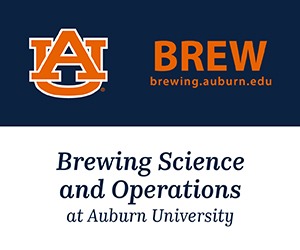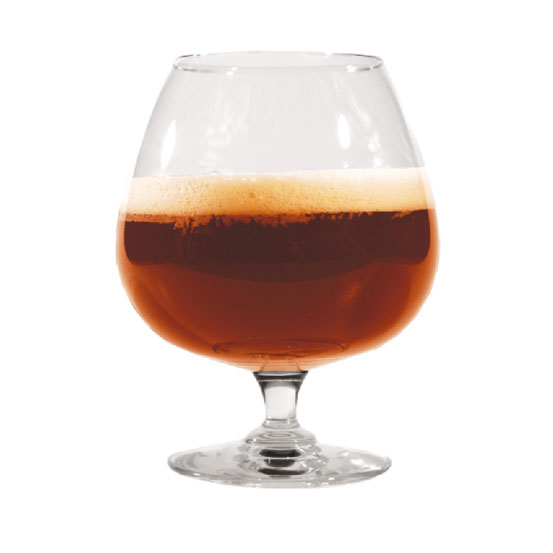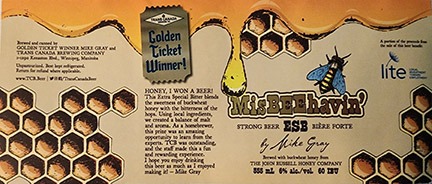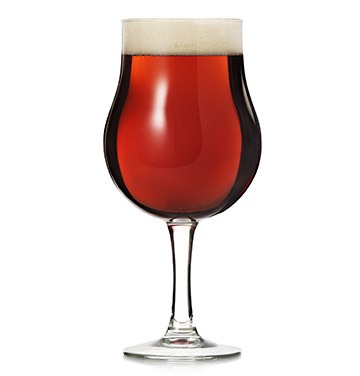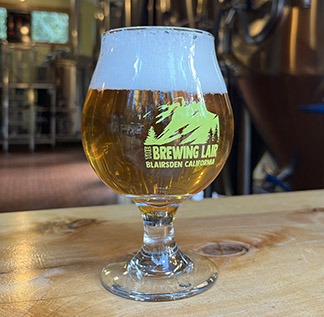Revolution Brewing Co.’s Infinity-Hero IPA Clone
All-Grain Recipe
(5 gallons/19 L, all-grain)
OG = 1.065 FG = 1.013
IBU = 45 SRM = 5 ABV = 7%
Ingredients
12 lbs. (5.2 kg) North American 2-row pale malt
14 oz. (397 g) Briess Carapils® malt
6 oz. (170 g) Gambrinus honey malt
8.5 AAU ApolloTM hops (80 min.) (0.5 oz./14 g at 17% alpha acids)
3.9 AAU Citra® hops (20 min.) (0.3 oz./8.5 g at 13.1% alpha acids)
0.5 oz. (14 g) HBC 586 hops (0 min.)
0.5 oz. (14 g) Amarillo® hops (0 min.)
2.6 oz. (74 g) HBC 586 hops (dry hop)
1.6 oz. (45 g) Nectaron® hops (dry hop)
1 oz. (28 g) HBC 1019 hops (dry hop)
0.26 oz. (4.5 g) Strata® hops (dry hop)
0.5 oz. (15 mL) Biofine Clear (or similar fining)
Omega Yeast Labs OYL-011 (British Ale V), Wyeast 1318 (London Ale III), or LalBrew Verdant IPA yeast
3⁄4 cup corn sugar (if priming)
Step By Step
This recipe uses a single-infusion mash at a ratio of 3:1 water-to-grain. Add 4.4 gallons (16.7 L) of water at 162 °F (72 °C) to the mash/lauter tun and stir in 1⁄2 tsp. gypsum and 1⁄2 tsp. calcium chloride and 0.7 mL phosphoric acid. Mash in grains targeting a temperature of 152 °F (67 °C) and rest there for 40 minutes. Vorlauf slowly for 10 minutes.
Collect first runnings in brew kettle (take a first wort gravity and pH reading). Start sparging 170 °F (77 °C) water when the grain bed is beginning to become exposed. Fill your kettle to 7 gallons (26.5 L) of wort, cutting your sparge at about 6 gallons (23 L) to allow the sparge water to pull through the grain bed.
Total boil time is 80 minutes. Add hops according to schedule. At the end of the boil, add the whirlpool hops and use a spoon or paddle to get your wort spinning to break up the hop pellets. Once you are done stirring your wort, start a 20-minute timer to allow your trub pile to form.
After your whirlpool, cool wort to 66 °F (19 °C) and pitch yeast. If using a liquid strain and you have an oxygen tank and regulator, Revolution targets their oxygen flow at 15 L/minute during the entire transfer of wort to the fermentation tank. Transfer as much clean wort away from your trub as possible to maximize the volume in the fermenter. Begin fermentation at 68 °F (20 °C) and follow the fermentation timeline:
Day 2: Raise the temperature to 72 °F (22 °C) after 24 hours of active fermentation.
Day 3: Check gravity. If it is 1.015-1.017, 2–4 gravity points above terminal gravity, harvest or dump thick yeast that has settled to the bottom of the fermenting vessel (or rack to another carboy) and add the dry hops.
Day 5: Dump all thick trub out of fermentation tank, if possible. Revolution says this is a critical step if you have the ability in order to preserve hop aromatics from interaction of yeast and hop oils during dry hopping.
Day 6–8: Confirm a stable terminal gravity and then set temperature to 32 °F (0 °C) to further drop yeast and hop matter when terminal gravity has been seen for multiple days.
Day 9–10: Add fining agent and gently swirl (or CO2 rouse your fermentation vessel from the bottom if you have a conical tank) to ensure good mixing. Within a few days of fining you should see a major improvement in clarity.
Day 12: Transfer to a keg or bottle condition to 2.5–2.6 volumes of CO2.
Extract With Grains Recipe
Replace the pale malt with 7 lbs. (33.2 kg) extra light dried malt extract. Place the crushed grains into a muslin bag and steep in 5 gallons (19 L) water as it heats up to 170 °F (77 °C). Remove the grains, allowing them to drip back into the kettle. Remove from heat and stir in the dried malt extract. Once fully dissolved turn the heat back on and bring to a boil.
Follow the remainder of the all-grain recipe instructions, being sure to top up the fermenter to 5.25 gallons (20 L) before starting fermentation.
Tips For Success:
Target a yeast pitch rate of 1 million cells/mL/°Plato. When using a liquid strain, having a healthy active yeast pitch going into fermentation and a yeast propagation before brewing this beer is extremely helpful. Oxygenation prior to fermentation is crucial with British Ale V and Revolution targets twice the oxygen flow rate when using it vs. London ESB.
The brewers at Revolution stress the importance of dry hopping at 0.5–1 °P (0.002–0.004) above terminal gravity and at 70 °F (21 °C) to get the cleanest, brightest biotransformation characteristics from the interaction of actively fermenting yeast and hop oils for this beer.
Removing the yeast and hops 5 days after the initial dry hop is crucial to retain the clean hop aromatics so the yeast doesn’t autolyze and the vegetal hop matter doesn’t begin to break down.
Achieving a faint, stable haze in a finished beer is tricky. Skipping any kettle finings and cutting your Biofine Clear in half (compared to Anti-Hero IPA) should get you in the ballpark.
Keeping CO2 pressure in the headspace of your beer when the fermentation and dry hop are complete will help preserve hop aromatics, which is key to a beer like Infinity-Hero IPA.
Gently carbonating your beer to prevent foaming will also aid in your foam stability and let those hop aromatics you worked so hard to extract really shine!


